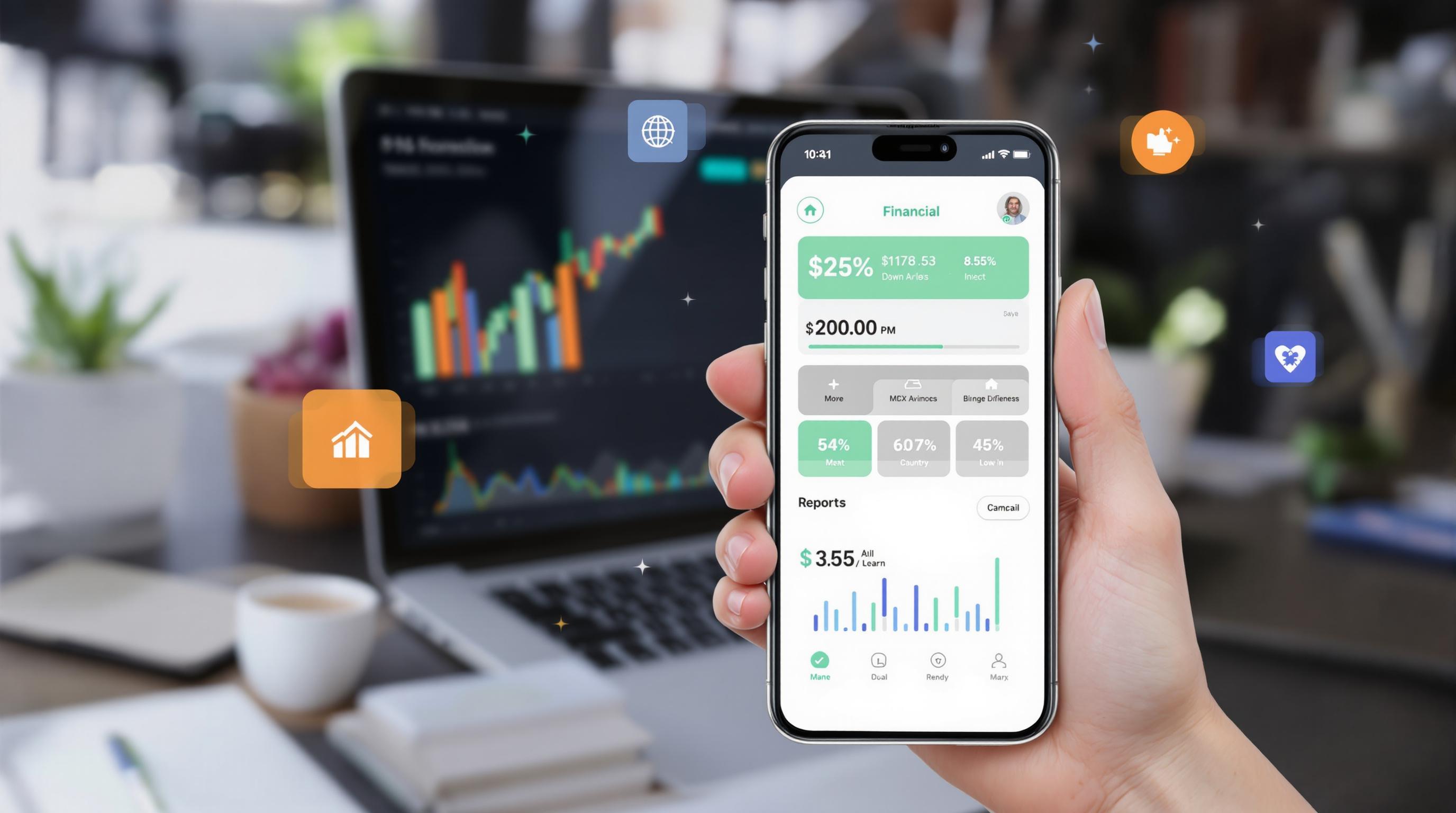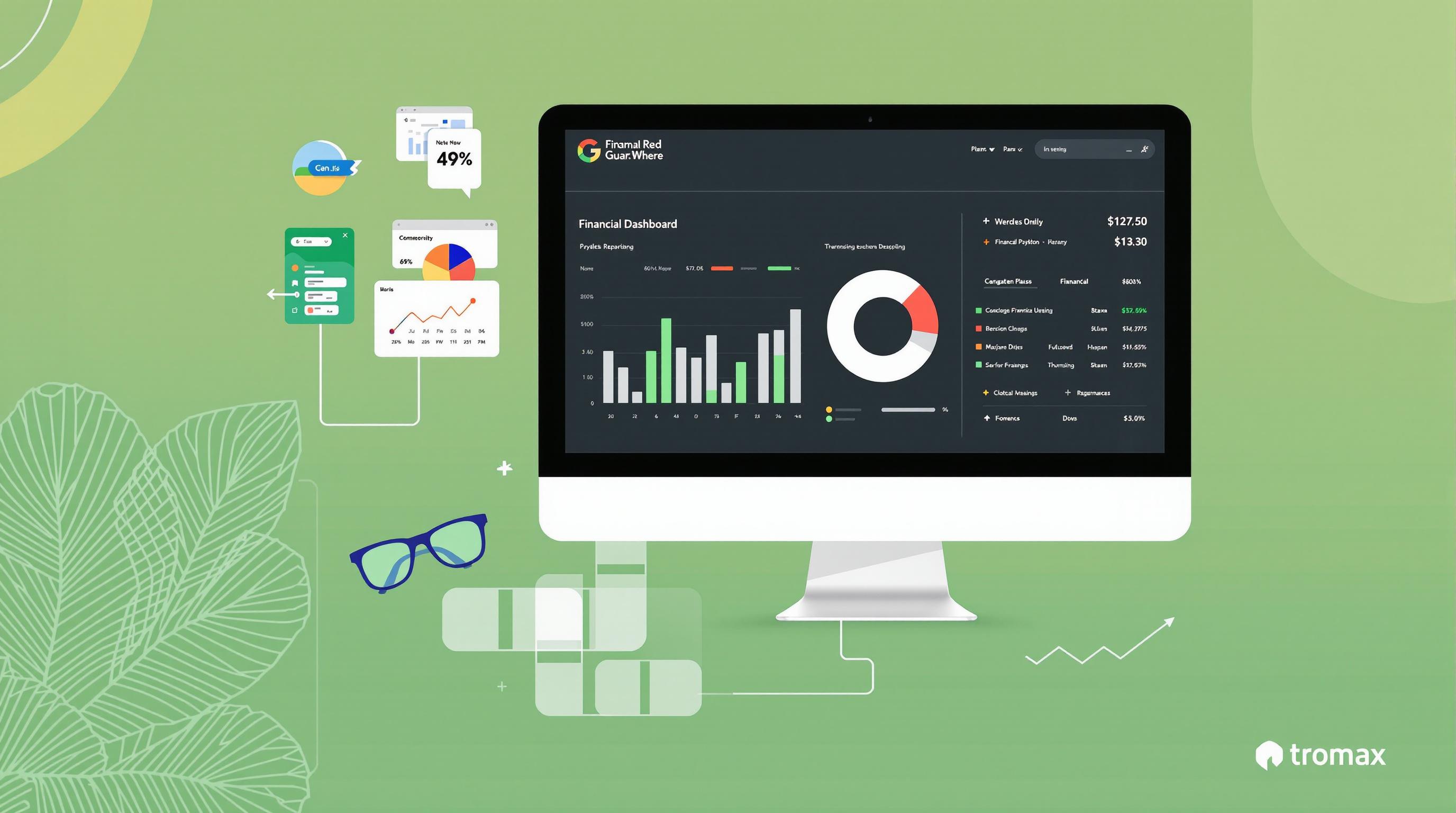Related Articles
- How Mobile Accounting Influences Entrepreneurial Mental Health and Work-Life Balance in Gig Economies
- The Quiet Costs: How Mismanaged Time Data Quietly Undermines Small Business Growth and Decision Making
- Top 5 Trailblazing AI-Powered Financial Reporting Apps Revolutionizing Accuracy and Speed Since 2019
- How Behavioral Economics Shapes Decision-Making in Financial Record Matching and Discrepancy Resolution
- How Subtle Shifts in Supplier Relationships Secretly Affect Your Company's Financial Health and Liquidity Balance
- Top 6 Payroll Solutions Born in the Last Five Years That Are Quietly Taking the Gig Economy by Storm
Top 9 Advanced Platforms Launched Since 2019 Driving Next-Gen Corporate Performance Insights
Top 9 Advanced Platforms Launched Since 2019 Driving Next-Gen Corporate Performance Insights
Top 9 Advanced Platforms Launched Since 2019 Driving Next-Gen Corporate Performance Insights
1. Microsoft Power BI Premium Gen2
Since its launch of the Premium Gen2 capacity in 2020, Microsoft Power BI has stepped up as a robust platform for advanced business intelligence. It allows corporations to handle large-scale data workloads with enhanced performance and scalability. The new generation introduced features like auto-scaling, improved dataset management, and real-time data refresh capabilities.
Power BI Premium Gen2 empowers executives and analysts to create and share deeper corporate performance insights more efficiently. Its seamless integration with Microsoft Azure and other enterprise tools supports a comprehensive view of organizational data. This has helped many Fortune 500 companies optimize decision-making processes based on precise and timely analytics.
According to Microsoft documentation and industry reports, companies that adopted Premium Gen2 witnessed up to 30% faster query performance and significant improvements in user metrics. This platform continues to evolve, integrating AI and machine learning to further expedite next-gen corporate analytics.
2. Tableau Server 2020.4
Tableau's 2020.4 release marked a significant advancement in enterprise analytics capabilities. With enhanced data management tools and the introduction of dynamic metadata, Tableau Server helps organizations maintain clean and accurate datasets for performance measurement. These improvements reduce data inconsistencies across departments.
The platform also introduced explain data features with AI-powered insights that make complex patterns easier to understand. This gives corporate leaders actionable intelligence that supports strategic initiatives, from sales optimization to operational efficiency improvements. Tableau Server's expansion in governance and security also made it a preferred choice for regulated industries.
Analysts have highlighted Tableau’s role in democratizing data access while maintaining rigorous control, which is critical in large enterprises. The 2020.4 edition set the foundation for augmented analytics capabilities that drive actionable and transparent corporate performance insights.
3. Google Cloud Looker (Enhanced 2020)
Looker, acquired and enhanced by Google Cloud in 2020, is a modern analytics platform designed to deliver real-time business performance insights at scale. Post-acquisition upgrades introduced better integration with Google’s AI tools and BigQuery, placing Looker as a key platform in cloud-native analytics.
Looker’s model-driven approach to data empowers corporations to define metrics consistently across all teams, preventing conflicting reports and fostering unified performance measurement. It also offers flexible visualization tools and embedded analytics that integrate into daily corporate workflows.
Industry feedback underscores Looker’s contribution to data literacy and strategic agility, especially in enterprises pursuing digital transformation. As a cloud-first platform, it supports hybrid environments, making it adaptable as corporate IT infrastructures evolve.
4. SAP Analytics Cloud (2020 Innovations)
SAP Analytics Cloud has advanced considerably since 2019, integrating analytics, planning, and predictive capabilities into one platform. The 2020 updates focused on real-time data processing and AI-powered planning assistance, both critical for corporate performance management.
The platform enables companies to create integrated business plans that adjust dynamically based on live data feeds, fostering agile responses to market changes. It supports diverse data sources, including SAP and third-party ecosystems, offering comprehensive insights across the enterprise.
SAP’s emphasis on combining transactional data with analytical intelligence has resonated strongly in manufacturing, finance, and retail sectors. These enhancements drive better forecasting, risk management, and performance benchmarking across global operations.
5. ThoughtSpot 6 (Released 2020)
ThoughtSpot 6 launched in 2020 with expanded search-driven analytics capabilities. By empowering users to analyze complex datasets through simple natural language queries, ThoughtSpot democratizes data exploration within organizations. This leads to accelerated discovery of corporate performance trends without requiring specialized BI skills.
The platform also integrated SpotIQ, its AI-driven insight engine, with greater sophistication, offering automated anomaly detection and personalized insights. This helps executives stay ahead of emerging business risks and opportunities by surfacing relevant performance data proactively.
ThoughtSpot’s unique combination of search interfaces and AI appealed particularly to organizations aiming to scale performance analytics rapidly among non-technical staff, thereby increasing data-driven decision-making cultures.
6. Domo Polaris (2021 Release)
Domo’s Polaris platform, released in 2021, offers a unified, cloud-native BI solution focusing on real-time operational intelligence. It supports complex data integration from multiple sources, including social media, IoT, and ERP systems, enabling comprehensive corporate performance monitoring.
Polaris introduced advanced AI and machine learning algorithms to automate insights generation and issue prediction. This equips corporate leaders with proactive performance management tools, minimizing downtime and uncovering hidden growth opportunities.
The platform’s mobile-first design supports executives who need instant access to KPI dashboards on the go. Domo's emphasis on collaboration and data storytelling helps teams across departments align on key metrics and strategic goals efficiently.
7. Sisense Fusion (2020 Evolution)
Sisense Fusion evolved in 2020 as an end-to-end analytics platform that merges cloud and on-premise data to deliver unified corporate performance views. It supports embedding analytics into operational applications, ensuring insights are available directly in users’ workflows.
The platform employs AI-generated insights and automated data preparation to reduce reliance on central BI teams. This accelerates the pace at which performance insights are developed and distributed within large organizations.
Sisense’s flexibility and scalability have made it popular in fast-growing enterprises seeking to leverage data to drive revenue and operational excellence. By 2021, its Fusion platform had expanded AI capabilities and enhanced dashboard interactivity for deeper analysis.
8. Oracle Analytics Cloud (2020 Updates)
Oracle Analytics Cloud saw significant updates in 2020, focusing on augmented analytics and enhanced self-service capabilities. These advancements empower organizations to build more sophisticated corporate performance models without deep technical expertise.
Oracle introduced better integration with its Autonomous Database and cloud infrastructure, resulting in improved performance and scalability. Its machine learning-powered data visualization tools automatically identify key influencers impacting business performance.
Companies using Oracle Analytics Cloud have reported accelerated insight generation and streamlined budgeting and forecasting processes, supporting overall corporate agility in fast-changing environments.
9. Qlik Sense SaaS (2019 Expansion)
Qlik Sense's SaaS platform expanded significantly in 2019, enabling enterprises to leverage cloud-native BI for enhanced performance insights. It offers associative analytics, allowing users to explore data freely without predefined query paths, uncovering hidden correlations impacting corporate outcomes.
The SaaS model facilitates automatic updates and lowers IT overhead, making modern analytics accessible to a wider set of users. Augmented intelligence features assist users by suggesting insights and predictive analyses that support proactive corporate decision-making.
Qlik’s focus on data integration and governance ensures that corporations maintain data security while unlocking the full potential of cross-departmental analytics. These capabilities have boosted business responsiveness and innovation.
Conclusion
Since 2019, the landscape of corporate performance platforms has evolved rapidly, with leading technology providers introducing advanced solutions that leverage AI, cloud computing, and augmented analytics. Platforms like Microsoft Power BI Premium Gen2, Tableau Server 2020.4, and Google Cloud Looker have enhanced how enterprises harness data for actionable insights.
Each of these nine platforms brings unique innovations to the table, collectively driving next-generation corporate performance management. Their focus on real-time analytics, scalability, and democratization of data access empowers organizations to stay competitive in an increasingly data-driven world.
Staying updated on these evolving platforms and integrating them thoughtfully within corporate ecosystems will be critical for businesses targeting sustained growth and operational excellence in the years ahead.




